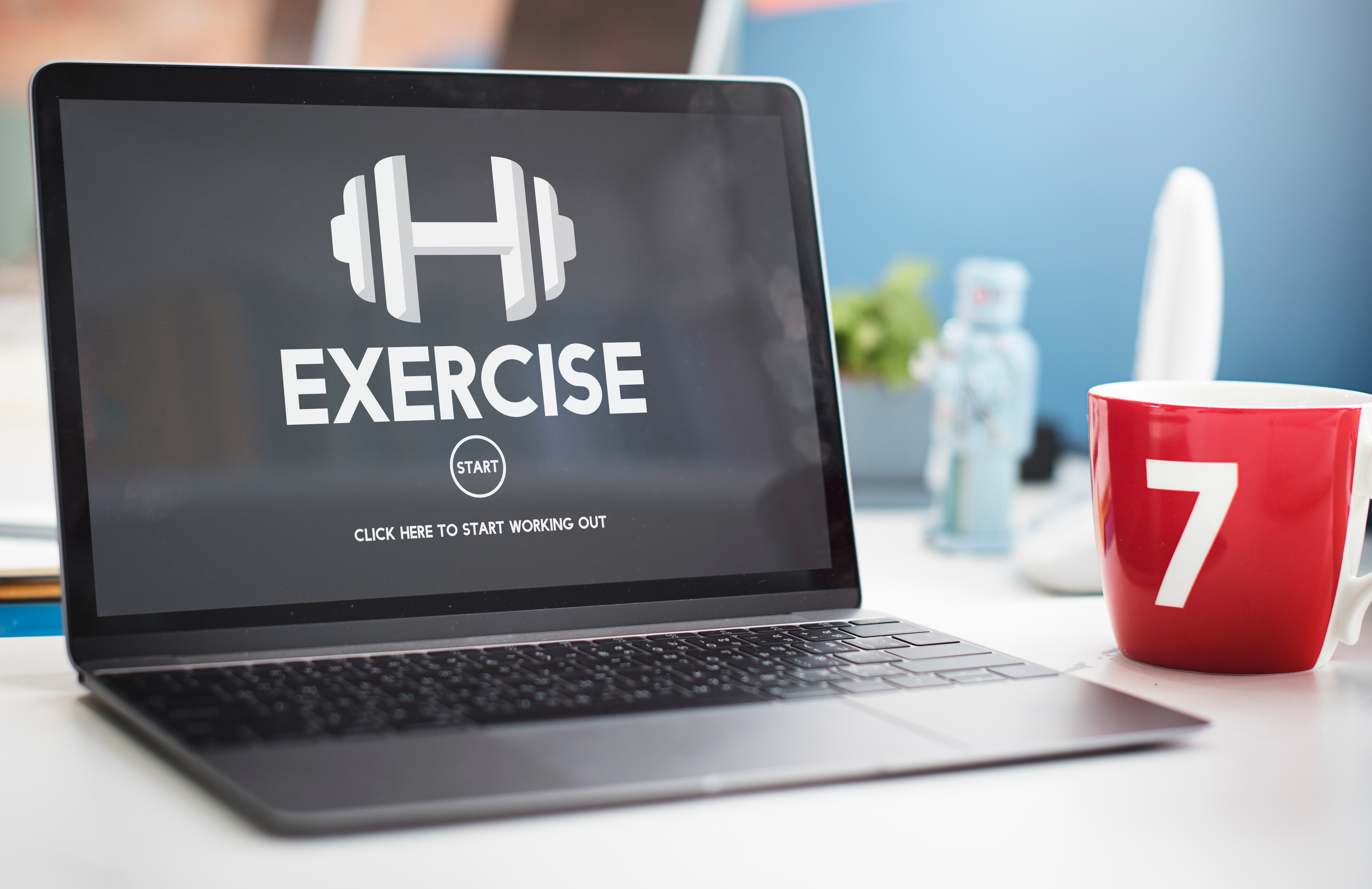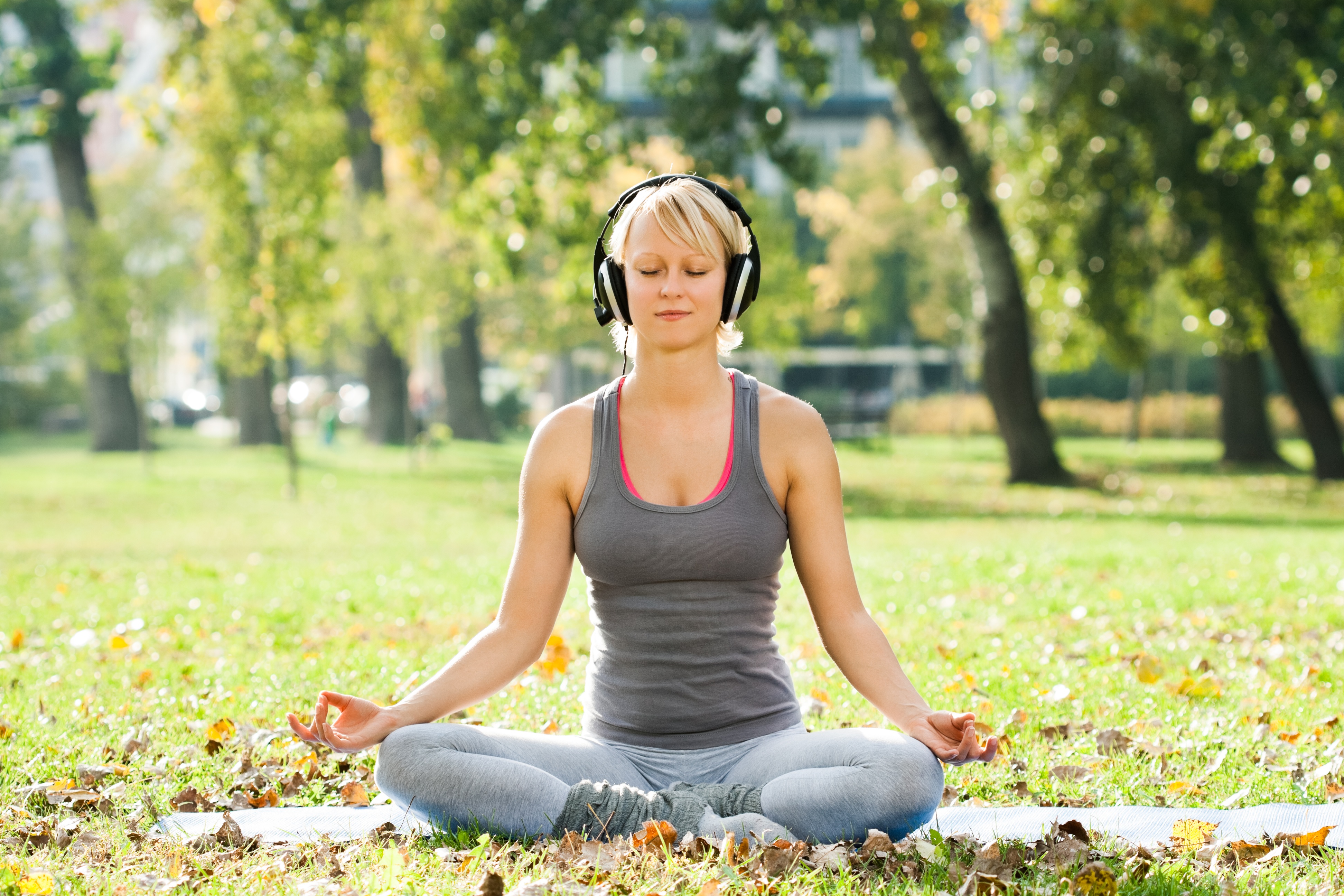The Beginners Guide to Stretching
Stretching is an often-overlooked aspect of fitness. Most people understand the importance of cardio and strength training but fail to realise that stretching is every bit as important. It doesn't help that there are several different types of stretching and, because of this, a lot of people simply don't stretch; period.
Stretching can be a great way maintain or improve your flexibility, which is best defined as the range of motion at a joint or joints. Good flexibility makes it easier to move, whereas poor flexibility can lead to joint restriction, poor posture, and pain.
In this guide, we're going to lift the lid on stretching and flexibility so that you will understand not only how important flexibility is, but how and when to stretch for best results.
Why You Need To Stretch
Fitness adaptations are specific to the type of exercise and training you do. For example, if you run and gradually increase the duration of workouts, you'll get fitter. In simple terms, you are fit for what you do. The same is true for flexibility.
Fitness adaptations are specific to the type of training you do. For example, if you run and gradually increase the duration of workouts, you'll get fitter. In simple terms, you are fit for what you do. The same is true for flexibility.
Unfortunately, adaptations are not always beneficial. If you spend a lot of time sitting down, your hip flexor muscles are placed in a shortened position and, as a result, get tighter and shorter. Tight, short muscles are a problem.
When a muscle shortens, it has a direct effect on the range of movement of the joint it crosses. This may simply limit the extent to which you can extend a joint or may even mean that the joint in question is pulled into a flexed position.
If your hips and abs are tight, as they often are in people who spend a lot of time sitting down, this can result in a rounded lower back, even when standing. This not only affects the range of motion; it will also have an effect on posture.
It's not just sitting that is bad for flexibility. Any activity that fails to take your muscles through a full range of motion can cause problems. Cycling, jogging, and doing strength training exercises through a partial range of motion can all result in reduced flexibly, a phenomenon called adaptive shortening.
The good news is that, like cardio and strength, flexibility is a trainable fitness component and stretching can help restore lost flexibility.
Additional Benefits of Stretching
The most obvious benefit of regular stretching is improved flexibility, but there are some additional benefits that are worth mentioning:
Mental and physical relaxation – stretching is as much about the nervous system as it is your muscles. You'll get better results from stretching if you relax and stretching itself is relaxing. This creates a perfect combination for reducing stress and lowering your heart rate, breathing rate, and blood pressure. Stress is a major cause of illness and disease, and anything that can help reduce stress is very beneficial.
Reduced risk of injury i) If you have tight muscles, it's all too easy to injure yourself if you take your muscle through a bigger range of movement than usual. For example, if you have tight, short hamstrings, kicking a soccer ball and following through with a high leg swing could result in a pulled muscle in the back of your thigh. Adequate flexibility should help reduce your risk of injury, especially during dynamic activities.
Reduced risk of injury ii) Tight muscles can affect the alignment of joints. For example, if you have tight chest and shoulder muscles, your upper arms may rotate unnaturally inward. This increases wear and tear on the already fragile and unstable shoulder joint and could lead to chronic shoulder problems such as arthritis and rotator cuff impingement. Good flexibility will help ensure your joints are in the correct anatomical alignment.
Improved circulation and reduced muscle soreness – when you stretch a muscle, blood flow into that area is reduced. This causes a backup of blood above the muscle being stretched. However, when you release the stretch, blood rushes back into the area, which increases oxygenation and circulation. This can help flush out the waste products that accumulate in your muscles during exercise and may reduce post-exercise muscle soreness.
Better posture – posture is the alignment of joints, and it can be good or bad. Posture normally means the alignment of your spine but can also refer to the other joints in your body. When you are in good posture, your position is held with minimal muscle tension or effort. Tight muscles can pull you out of good posture. This can cause pain in the opposing muscle, which now has to do more work than usual and can also affect the health of the joint.
Poor posture is the leading cause of back and neck pain. Improving flexibility can help prevent problems like forward head carry, a rounded lower back, and slumped shoulders. In short, it'll make standing and sitting up straight easier. Better posture instantly makes you look slimmer, taller, and younger. It's a great benefit of regular stretching.
Reduced pain – tight muscles often have a reduced blood supply. They are hypertonic, which means they are contracting more than they should, and almost continuously. This causes a build-up of lactic acid and other metabolic waste products, all of which can cause pain. Stretching helps alleviate hypertonicity, which restores blood flow and reduces pain.
In addition, stretching can also help reduce knots, scar tissue, and adhesions in muscles by remodelling muscle fibres. As the tension increases, the fibres in the muscle tissue align themselves in the same direction as the applied stretching force. When this occurs, it realigns any disorganised fibres in the direction of the tension. This can even help to rehabilitate scarred tissue back to health.
The Science Of Stretching
To understand why stretching is so important, it's worth learning a little about what happens in your muscles when you stretch. Anatomy and physiology are big, complex subjects but, with regards to stretching, that can all be boiled down to just a couple of sensory organs and mechanisms.
Muscle spindles – when you stretch a muscle, proprioceptors called muscle spindles detect the change in muscle fibre length. If you stretch a muscle too fast, the muscle spindles trigger a contraction to prevent over-stretching and reduce the potential for injury. This called the inverse stretch reflex.
However, if you stretch slowly, your muscle spindles perceive no such threat, and they allow the muscle to relax so it can be stretched further. This is called the stretch reflex. Because of muscle spindles, slow, smooth stretches are preferable to fast, bouncy stretches, especially if your aim is to improve flexibility.
Holding a stretch for an extended time, such as 30-60 seconds, habituates the muscle spindle to this extended position so that it becomes accustomed to its new length.
In time, your muscles will adopt that new, lengthened position, even at rest.
Golgi tendon organs – Muscles are arranged in opposing pairs across joints, such as the biceps and the triceps, and the quadriceps and hamstrings. Sensory organs called Golgi tendon organs, or GTOs for short, monitor muscle tension. When one muscle contracts, GTOs instruct the opposing muscle to relax. For example, if you contract your biceps, your triceps automatically relax to allow movement to occur.
Contracting the opposite muscle to the one you are stretching promotes relaxation and will result in a deeper stretch. This is called reciprocal inhibition.
Types Of Stretching
There are several different types of stretching, and you should use the right one at the right time to get the best results. It's not enough just to stretch, you need to choose the right type of stretching according to what you are trying to achieve.
1. Static Stretches – Maintenance
Static stretches are stretches that you hold for a predetermined length of time with little or no movement. You simply ease into a stretched position and stay there. This stretched position is called the point of bind, or POB for short, and is your current comfortable limit of flexibility.
Maintenance stretches are meant to maintain your flexibility and prevent it worsening. For example, after a long run, you might stretch your leg muscles to stop them from tightening up while you rest and recover.
Because maintenance stretches are not meant to have a big impact on your flexibility, they are only held for a short time – usually 10-15 seconds. They do not cause much in the way of muscle relaxation and won't improve your flexibility.
Uses: Static maintenance stretches are best used after exercise as part of your cool-down and for stretching muscles that are already flexible. You could also use them in your warm-up but dynamic stretches, discussed later, are usually a better choice.
2. Static Stretches – Developmental
Developmental static stretches are similar to maintenance stretches except they are held for longer. As you ease into a stretch and then hold it, after 15-20 seconds your muscles relax, allowing you to stretch a little deeper. This is the effect of the muscle spindles and the stretch reflex.
Developmental stretches are usually held for 30-60 seconds – or 2-3 stretch/relax/stretch cycles. If a muscle is especially tight, you may hold the stretch for longer – 2-3 minutes.
Because of the duration of developmental stretches, you might only choose to stretch a couple of muscle groups at a time. You also need to select stretches that are easy and comfortable to hold for an extended time. If you are uncomfortable or unable to hold the necessary position without straining, the stretch will not be effective.
Uses: Because developmental stretches cause significant muscle relaxation, they are not suitable for use before exercise. However, they are ideal for use during your cool-down. You can also perform developmental stretches to ease tension and reduce stress. Use developmental stretches on any muscle groups you want to relax and lengthen.
3. Dynamic Stretches
Dynamic stretches involve smooth, progressively larger movements and often don't look like stretches at all. Dynamic stretches extend your muscles to their POB, but you don't stay there. Instead, you relax and then do it again. This uses your Golgi tendon organs and involves reciprocal inhibition. Examples of dynamic stretches include:
- Shallow progressing to deeper squats and lunges
- Standing chest fly
- Standing overhead reach
- Forward and sideways leg swings
- Trunk twists and side bends
Dynamic stretches are usually performed for reps rather than time. 10-15 reps that gradually increase in range of movement should be sufficient. 3-5 exercise should be enough to get you ready for your workout.
Uses: Dynamic stretches do not increase your flexibility much but do prepare your muscles for activity. They also keep you warm and maintain an elevated heart rate. This makes them ideal for warm-ups, but not suitable for cool-downs.
4. PNF Stretches
PNF is short for proprioceptive neuromuscular facilitation and is a blanket term used to describe a type of stretching designed to produced rapid improvements in flexibility. While there are several different types of PNF stretching, they are all quite similar.
When you contract and then relax a muscle, it relaxes more completely than before. This makes it easier to stretch. PNF stretching makes the most of this phenomenon to allow you to noticeably increase your range of motion.
For example, using a stretching strap, lie on your back with your legs straight and the strap looped over one foot. Use your arms to pull your leg up and stretch your hamstrings. As you feel your hamstrings start to relax, push your leg down against the strap but do not allow your leg to move – use your arms for resistance.
After 5-10 seconds, relax and pull your leg into a noticeably deeper stretch. Relax in this new POB and then repeat the contract/relax cycle 2-3 more times. PNF desensitizes the muscle spindles and causes greater muscle relaxation, allowing for a deeper stretch. You could also contract the opposing muscle, in this case the quadriceps, to use the GTO to increase relaxation and allow for an even deeper stretch via reciprocal inhibition.
Uses: Unlike regular static stretches, PNF stretches do not reduce power output so they can be used as part of a warm-up. This is especially useful if you have a tight muscle that makes performing a specific exercise difficult. For example, if tight hamstrings make you round your lower back when squatting. PNF stretches are also ideal for the cool-down.
5. Ballistic Stretches
Ballistic stretches are a lot like dynamic stretches except they are done much more quickly. Instead of easing in and out of the POB, the end of the range of motion is more of a bounce. Lots of sporting activities are ballistic stretches in disguise – high kicks in dance or martial arts, for example. If you are involved in these types of activities, you may wish to include ballistic stretching in your workouts.
However, because of the velocity involved in ballistic stretching exercises, there is a significant risk of injury. For this reason, most people do not need to do ballistic stretching exercises and should limit themselves to dynamic stretching.
Uses: Ballistic stretches are best used in the warm-up. However, if you do use ballistic stretching, make sure your muscles are warm. Do some gentler dynamic stretches before going "full ballistic." They do not have much of a relaxation effect so are not suitable for cool-downs.
Considerations & Cautions For Stretching
Get more from your stretching by observing these considerations and cautions:
DO warm-up before stretching – cold muscles do not stretch well, and if you try to stretch a cold muscle, you are more likely to injure yourself. Spend a few minutes warming up the area you are about to stretch. Some light cardio will get the job done.
DO ease into your stretches gradually – if you try and stretch a muscle too quickly, you will trigger the inverse stretch reflex. This will cause your muscles to contract and shorten instead. Ease into each stretch to minimise the effect of the inverse stretch reflex.
DO relax your entire body – to get the most from your stretches, make sure you relax your whole body and not just the muscle group you are working on. For a stretch to be effective, you need to relax your face, neck, and shoulders, breathe slowly, and imagine the target muscle lengthening.
DO stretch often and consistently – even very enthusiastic stretching once a week won't do much for your flexibility, although it may feel good at the time. Flexibility decreases gradually over time, and it will take regular and consistent effort to restore it. Commit to stretching often and consistently. Stretching several times a day is an excellent idea if you have very tight muscles.
DO focus on the muscles that are the tightest – stretching your entire body might seem like a good idea, but it can be very time-consuming. Make better use of your time and effort by focusing on your tightest muscles. This will reduce the length of time you need to spend stretching per day, making the entire process more palatable.
DO break up long periods of sitting with corrective stretches – long periods of sitting cause the majority of flexibility issues that most people have. It places your hip flexors and hamstrings in a shortened position for hours at a time. Try and stretch your hamstrings and hip flexors several times a day to break up long periods of sitting. Your posture and your lower back will thank you for it!
DO follow a stretching routine – in the same way, you should follow a routine in the gym, you should follow a stretching routine too. Having a routine ensures you that you don't miss out any important muscles. If you design your own stretching routine, put your stretches in a logical order so that one exercise links to the next. For example, work up or down your body, or do standing stretches followed by seated stretches followed by lying stretches.
DON'T force or hurry a stretch – when it comes to stretching, more haste means less speed. Your muscles will resist if you try and stretch them too hard or too fast. You may also injure yourself. Calm your mind, move slowly, and ease gradually into each stretch. Picture your muscles relaxing and lengthening.
DON'T hold your breath when stretching – holding your breath creates tension throughout your body and also increases your blood pressure. It's very easy to focus so much on whatever stretch you are doing that you forget to breathe. Breathe slowly, deeply, and evenly to maximise relaxation and get more from your stretching.
DON'T stretch beyond your comfort point – no pain, no gain is a common gym slogan, and you need to be prepared to work hard when you lift weights or do cardio. However, stretching beyond your comfort point is not a good idea. If your limbs shake or you feel pain or burning in the muscle you are working on, you have probably stretched it too far or too fast, increasing your risk of injury. Ease off if you feel any discomfort in the muscle you are stretching.
DON'T forget about the position of the rest of your body while you stretch – you'll get better results from your stretches if you maintain good posture and don't put the rest of your body into an unnatural or uncomfortable position. Don't focus so much on the muscle you are stretching that you forget about the rest of your body. You may end up undoing the benefit of many stretches if you do, e.g., rounding your lower back while stretching your hamstrings.
DON'T feel you have to stretch all your muscles the same way for the same duration – flexibility can vary from one muscle group to another, and even from left to right. Adapt your stretching to reflect your personal needs so that you get the best possible results in the least amount of time. Mix and match stretching methods to reflect your requirements, spending more time on tight muscles and less time on those that are already adequately flexible.
DON'T bounce while you stretch – unless you are doing ballistic stretches, it is not a good idea to bounce when you stretch. Bouncing will trigger the inverse stretch reflex which makes your muscles contract and shorten rather than relax.
Conclusion
Cardio and strength training are undeniably important, but so too is stretching. In fact, if you want to keep on exercising for many years to come, stretching is arguably the most important thing you need to include in your workouts. Tight muscles can have a big impact on how you look, feel, and move – and none of those effects are good!
The good news is that stretching is easy and doesn't require any special equipment. It's the sort of thing you can do while watching TV or any other time you have a few minutes to spare. At the very least, you should break up long periods of sitting by stretching your hip flexors and hamstrings.
Time spent stretching is time well spent. You might not notice any benefits initially, but in a couple of weeks, you'll start to see and feel how regular stretching can have a positive impact on your posture and exercise performance.
Share this
You May Also Like
These Related Stories

10 Deskercises to Improve Your Wellbeing at Work

How To Manage Stress





